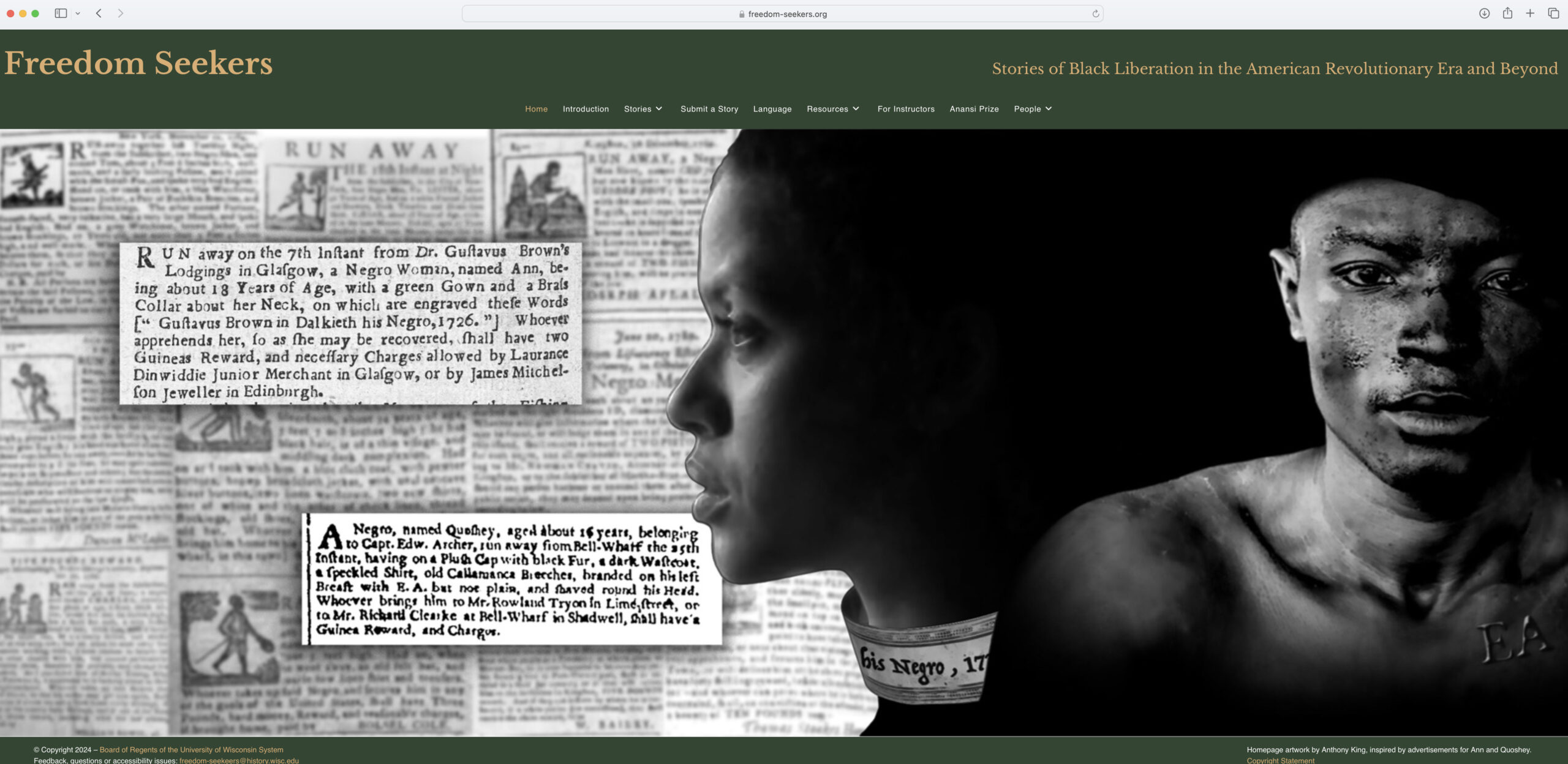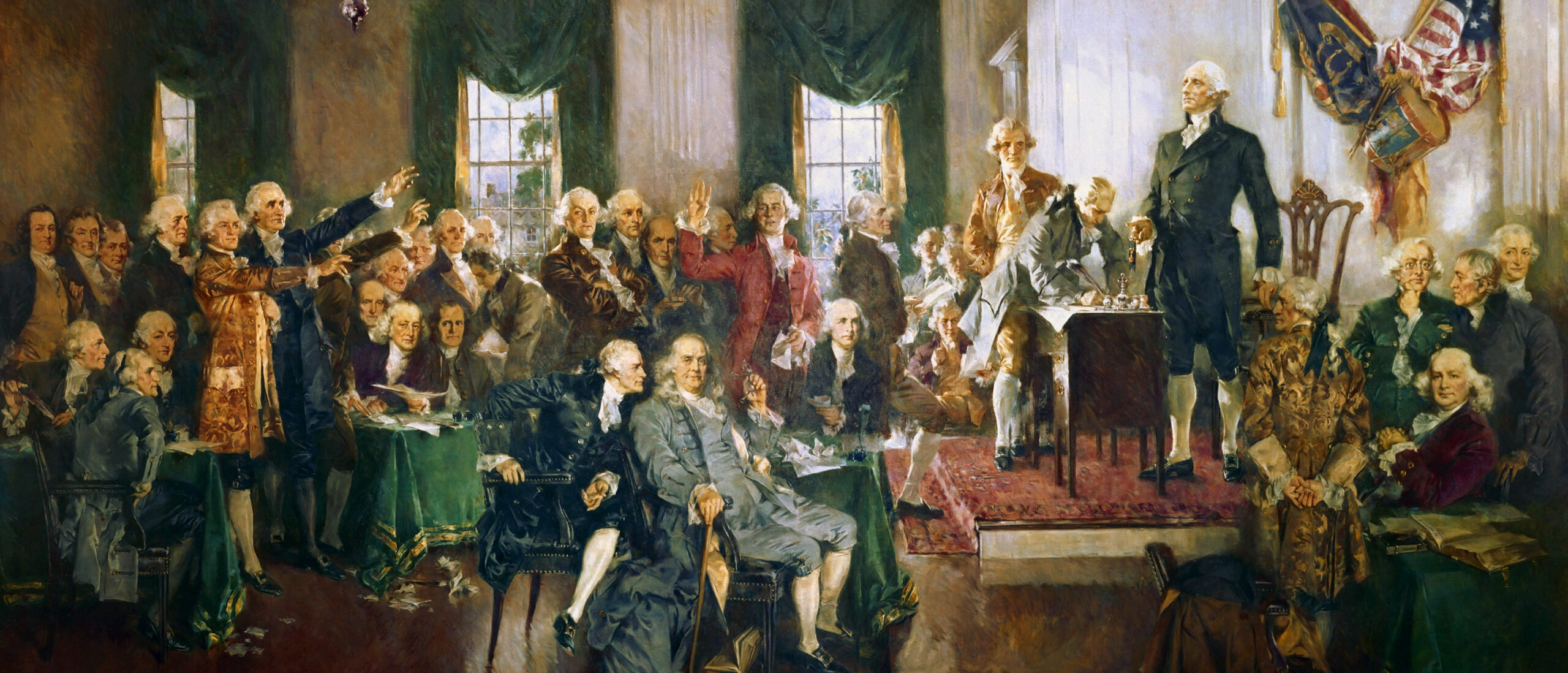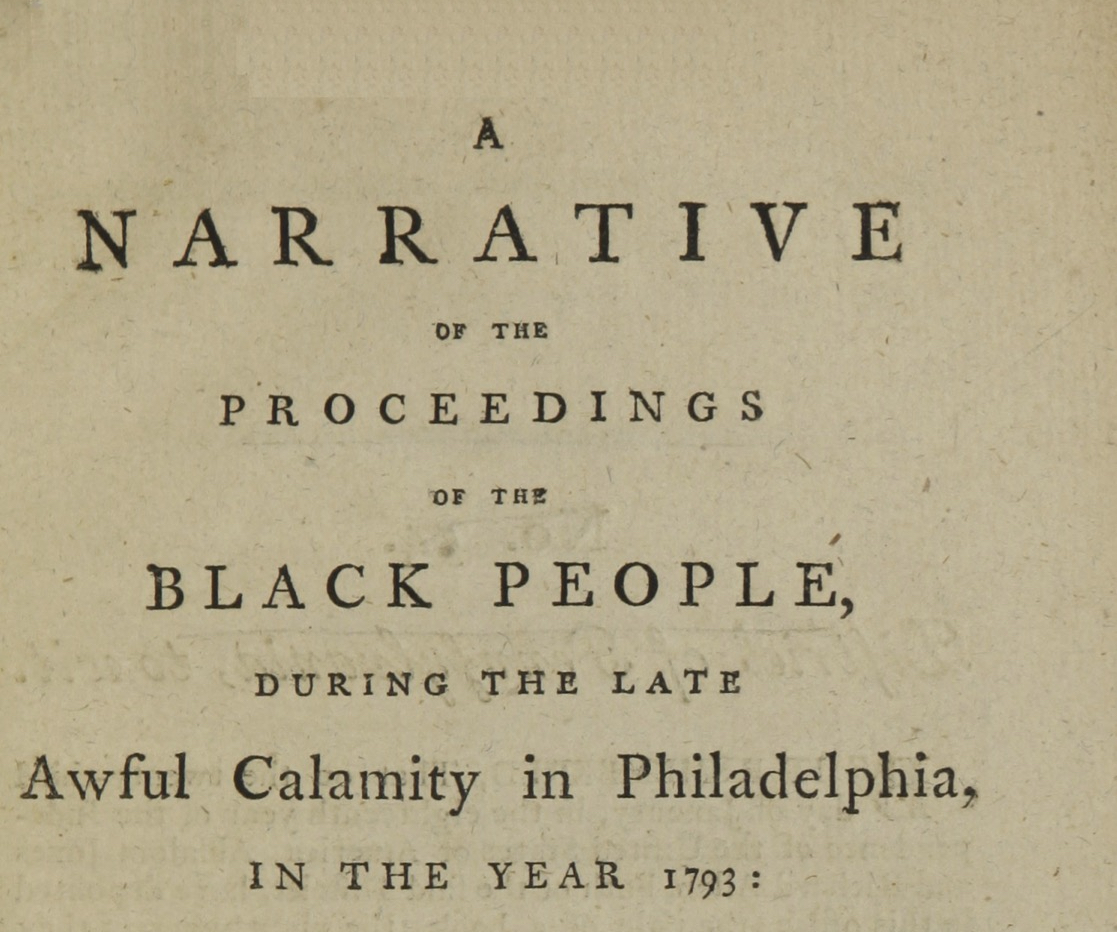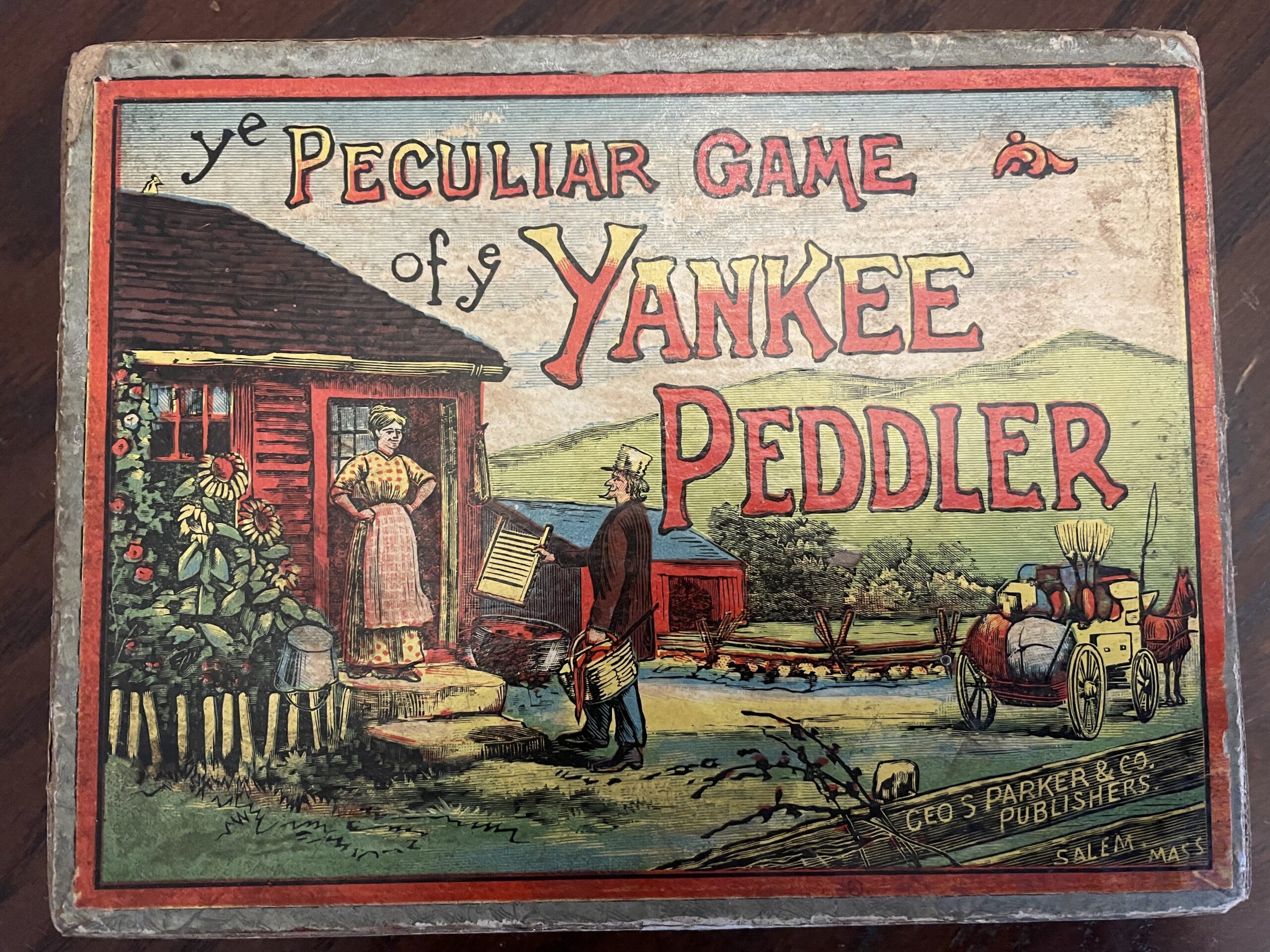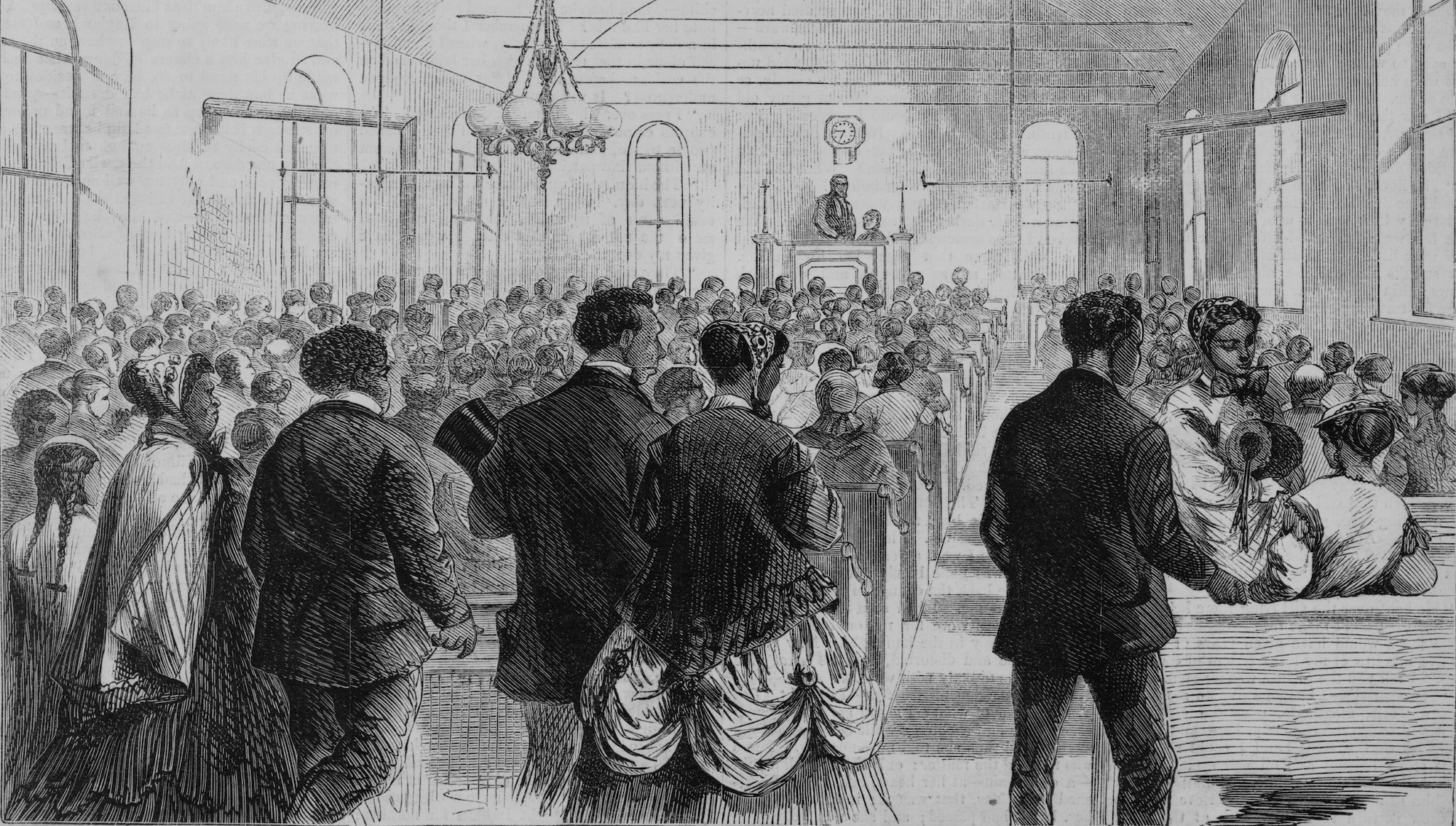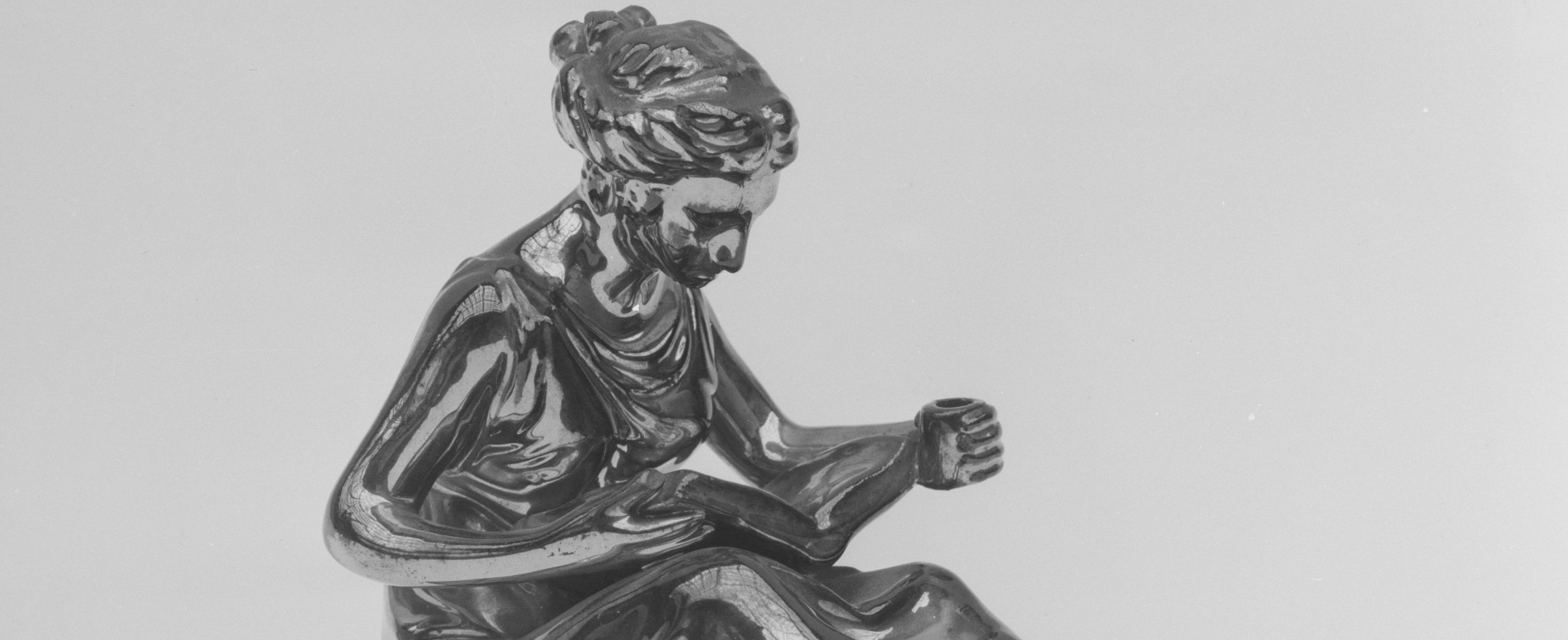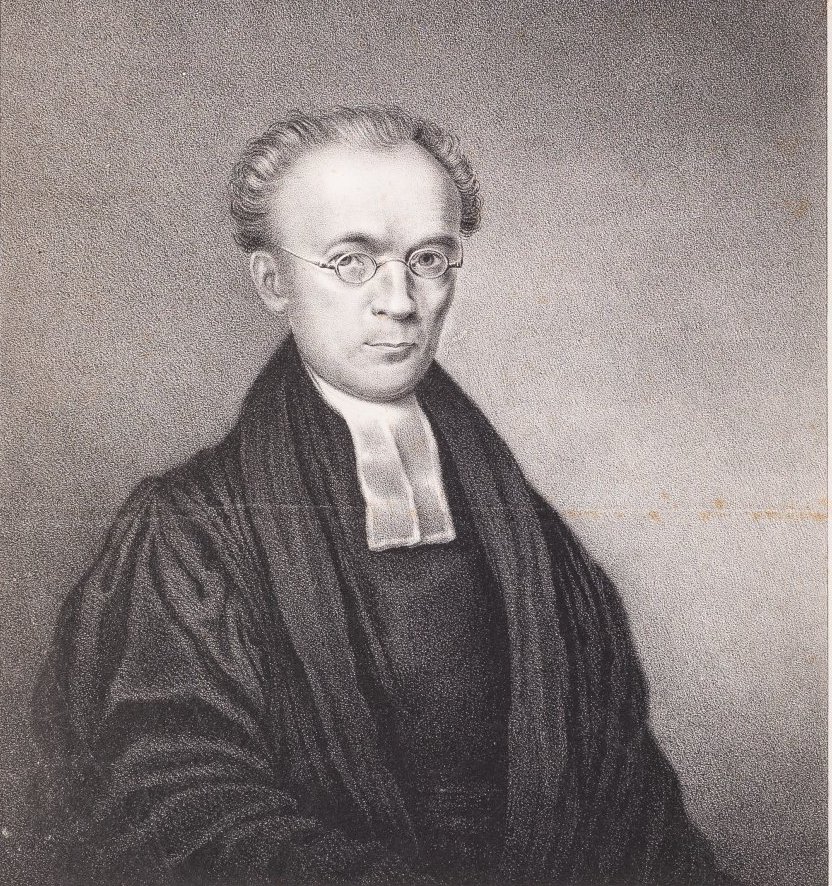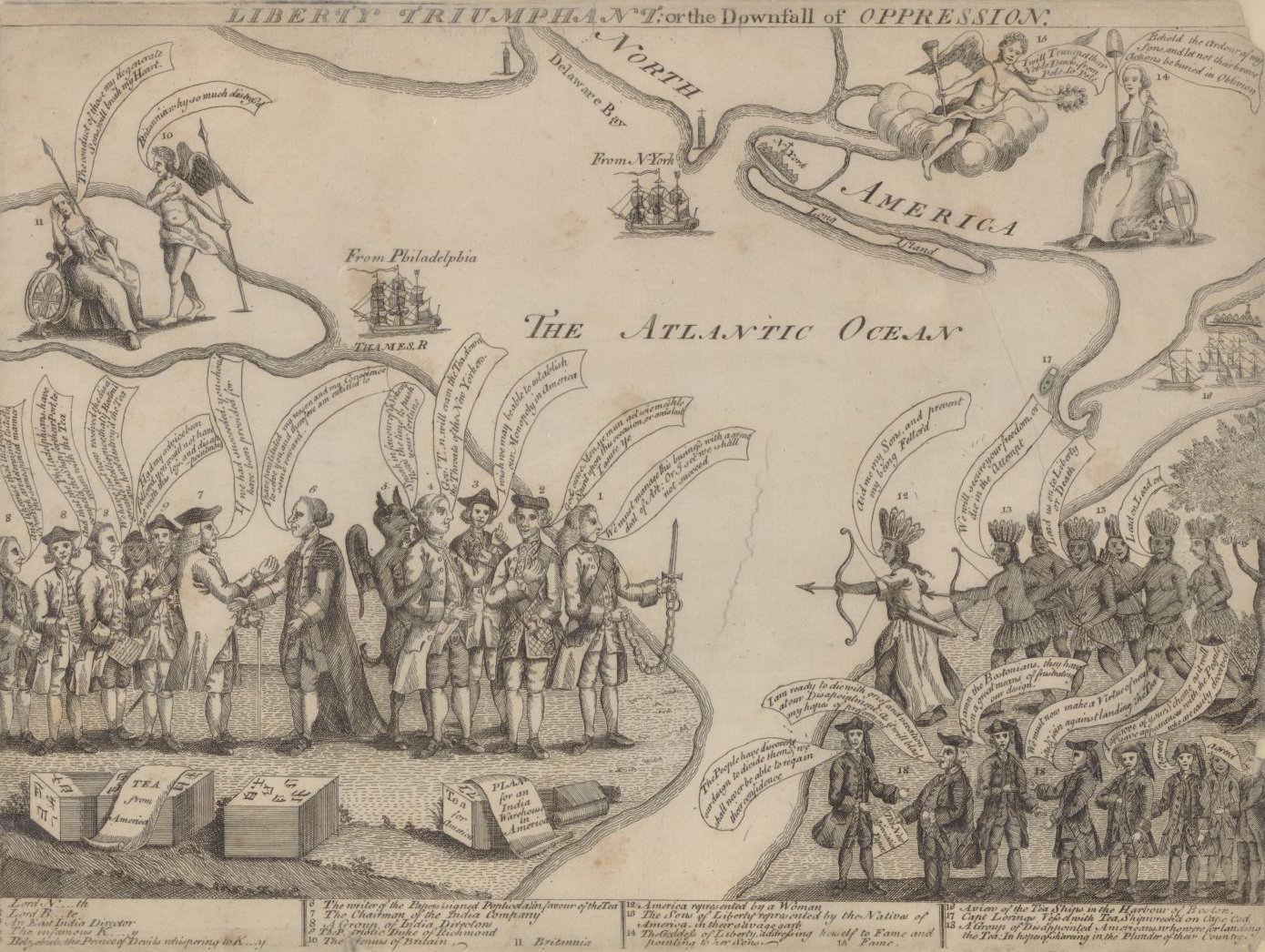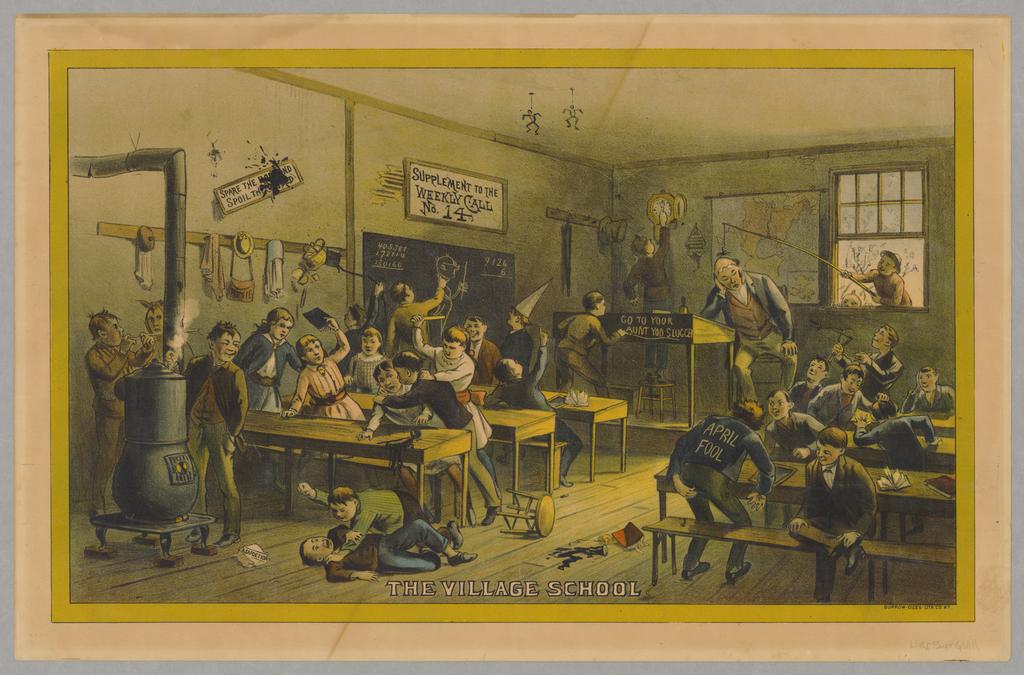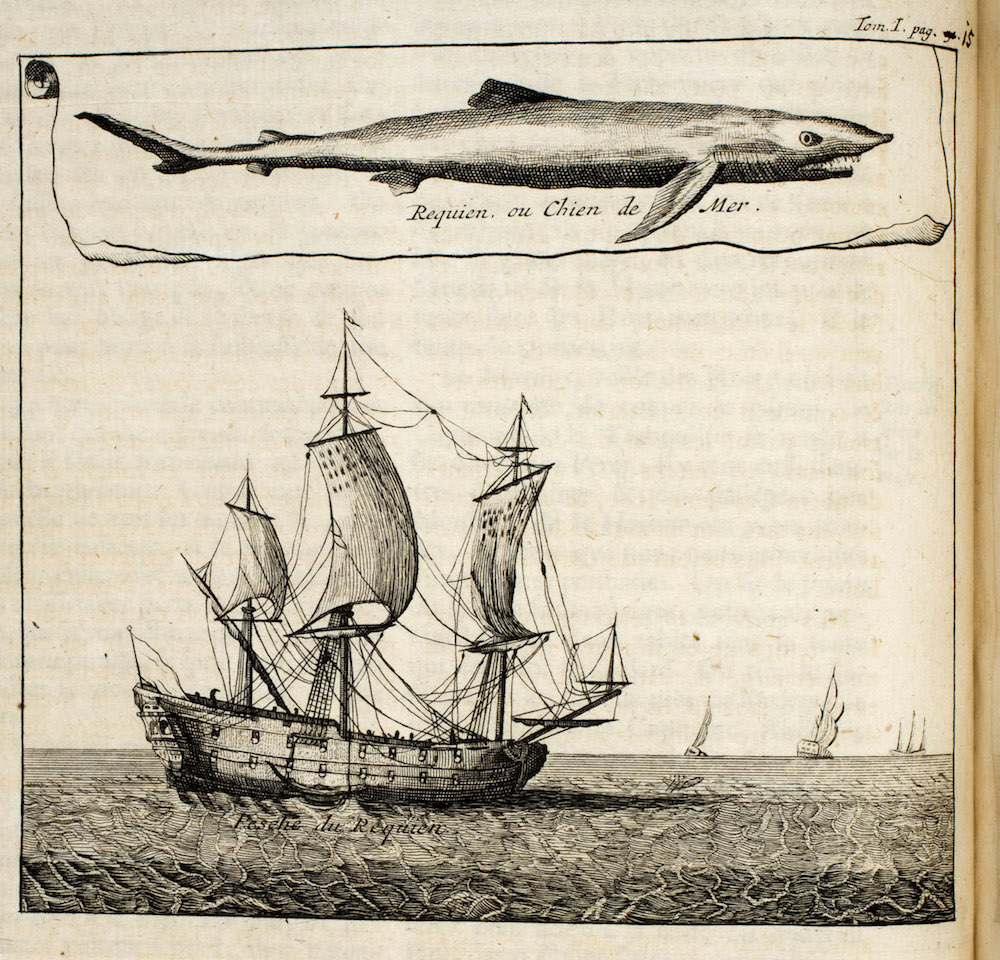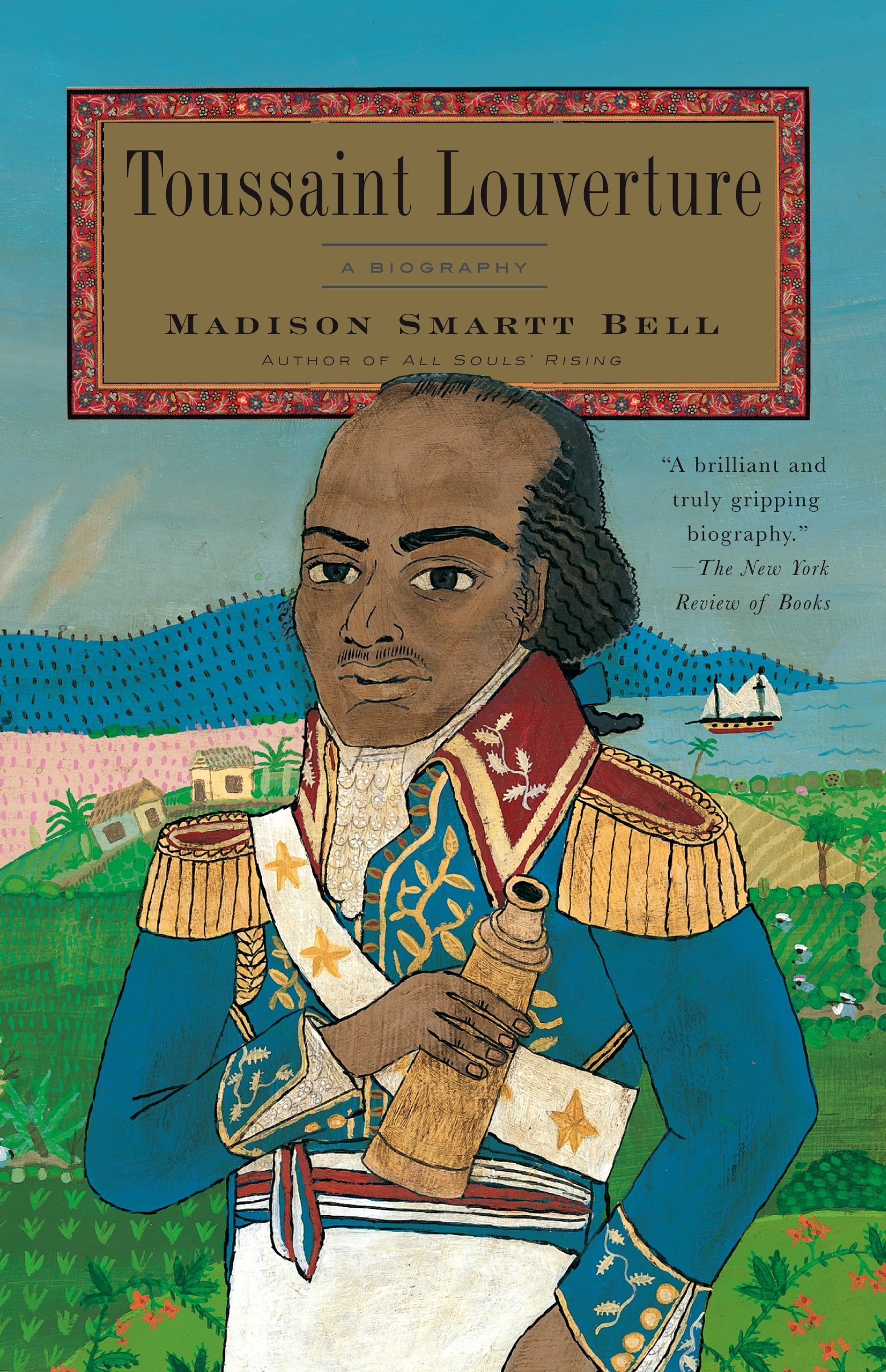Of course, it had always been there, but my students brought Point Plantation into historical view by finding its one-time name, owner, some of its nineteenth-century residents, and its actual location. Pretty good for eleven undergraduates, in a 300-level history class, only one of whom was a history major. From my pedagogical perspective the transcription assignment that led to this result raised questions about the benefits and weaknesses of assigning a research project to non-history majors with no scaffolding in primary and secondary document analysis or accessing information in libraries and archives.
My Spring 2015 “History of North Carolina” class at the University of North Carolina at Greensboro was tasked with a survey of our state’s past. In addition to a review of critical themes in North Carolina history, I wanted to offer students an opportunity to perform historical research. But I have always been as uninterested as the students are in turning in individual assignments that will be graded and forgotten by the end of the semester. So, I turned to collaboration with a local historic site. Practicing history in public offered students an opportunity to apply their developing historical thinking skills outside of the history classroom. Doing historical work for a community collaborator also adds urgency and a sense of purpose that students—in my experience—recognize and respond to. I planned this project with modest goals: transcribe and provide an editorial introduction to an account book dated to the late 1850s and associated with John Motley Morehead, North Carolina’s influential antebellum governor. I could not guess how much this project—intended to be an adjunct to the survey—would grow beyond transcription and basic editorial work, or that it would turn into an ad hoc methods class for non-history majors, most of whom were enrolled in the university’s School of Education or the College of Health and Human Sciences.
Today, Historic Blandwood, the former Morehead residence, is home to Preservation Greensboro Incorporated, and is open for guided tours. Staff at Blandwood are acutely aware of the absence of enslaved people in their house tours and have for years sponsored historical and archaeological research for evidence of the enslaved population. But the scattered manuscript records for the Morehead family are frustratingly absent of any details about the family’s human property. Basic questions cannot even be answered: How many enslaved people worked there? What work did they do? Where did they live? When the Morehead account book—missing for fifteen years—emerged from Blandwood’s library, a quick perusal revealed to staff and docents exciting possibilities. In eighty-two pages, with entries beginning in 1856 and petering out in the late 1860s, the book recorded household expenses, receipts for sale of agricultural goods, costs of personal clothing, medical expenses, debts owed to and owed by Morehead family members, and taxes. It also listed the “hire in” and “hire out” of enslaved people. Clues within the book revealed that Letitia Walker, Morehead’s daughter, kept it, and it gave us the names of enslaved people like Rene, Jenny, and Ben. The small book offered the class the best opportunity to answer questions about Blandwood’s enslaved population.
To approach the task of examining this book, I divided the class into three teams. The transcription team tackled the account book itself, with the additional assignment of alerting the other groups of emerging information. The secondary source team began reading academic histories to contextualize the account book content. I dispatched the deeds team to the Guilford County Register of Deeds to search for bills of sale for enslaved people in the 1850s, anticipating that we would corroborate and elaborate on names that appeared in the account book.
The initial work of the secondary and deeds teams revealed two problems with conducting research without disciplinary scaffolding. The secondary team could not find relevant books and articles. Despite the university’s imperative to teach information literacy, many non-history major undergraduates lack the contextual knowledge to use library catalogs, JSTOR, EBSCO, and similar databases to find the most useful academic resources. For instance, they would not have used “slave hiring,” or “slaveholding widows” as historical concepts to search for, and would not have identified the most appropriate historiography to explain them. So, after a too-quick introduction to these tools, I told them which books and articles they needed to consult. Had this been a proper methods class, I might have better prepared for this and they—as history majors—might have anticipated and developed the contextual knowledge to perform effective searches.
The deeds team encountered roadblocks because of gaps in the historical record. While the Morehead family was among the largest slaveholders in Guilford County, they do not show up as either buying or selling a slave in the 1850s. The deeds group, then, was very early left with nothing to do. Several team members made valiant but unfruitful trips to the State Archives of North Carolina in Raleigh and the Rockingham County Register’s Office. This absence of evidence surprised me and frustrated them.
As transcription continued, items from the account book stymied us—for instance, the frequent appearance of receipts for “boat money.” We spent considerable class time employing historical imagination to ponder ways “boat money” could be earned in a landlocked county. We presumed that “boat money” related to Governor Morehead’s factory operations on the Dan River in Rockingham County. We looked to Rockingham, also, to account for the large amount of corn and hogs represented in the book. I and several students invested considerable time searching the United States Census’ agricultural schedules to locate evidence of Letitia Walker’s economic presence there. We found none. Yet the volume of agricultural exchanges exceeded anything that could have been produced at Blandwood, which was an urban estate, not a plantation.
The absence of firm evidence from the account book to tell us about the lives of enslaved people at Blandwood, combined with a surfeit of entries about agricultural exchanges, white people’s accounts, and doctor’s bills, forced my students to shift their research agenda away from the identification of enslaved people at the Moreheads’ Greensboro home. As my colleague Lisa Tolbert told the class, you must surrender your ideas to what the evidence tells you. We had imagined that the slave names might turn up in the deeds, or that Letitia Walker’s economic interests would mimic her father’s and turn up in Rockingham County records. Without the capacity to adjust our tactics to respond to emerging evidence, we might have succumbed to temptation to place Rene, Jenny, and Ben at Blandwood and leave everything else inadequately explained. That, we discovered, would have been a mistake.
No one expected the Yadkin River. Staff at Blandwood had heard family lore about a farm southwest of Greensboro in Davidson County, of which the Yadkin River forms the western border, but had no documentary evidence about it. Following notations about taxes paid in Davidson County, we shifted our gaze away from Rockingham County and Greensboro. We also developed a methodology that helped us organize how we described the account book’s contents that started with my intuition about rural nineteenth-century social and family life. (I suspect the professor’s intuition is more difficult to disentangle from the class research process than is commonly acknowledged.) Large family networks tended to cluster together in geographic proximity, and so family names can be uniquely identified to one part of a region using the United States Census, while occasionally ruling them out from other places. We noted that most of these names were associated with agricultural exchanges—particularly the buying and selling of potatoes, chickens, lard, or the borrowing of small amounts of cash. We similarly confirmed that many merchants and physicians that Walker paid were in Salisbury, neighboring Davidson County to the west, not in Greensboro, where we had assumed they had been. We called these clustering of names, locations, and types of economic exchanges “contexts.” These contexts, and the economic relationships they illuminated, confirmed that the account book was, indeed, for a plantation in Davidson County. But where?
Here the students learned the value of research by aimless browsing. We used the United States Census on Ancestry.com and local papers through Newspapers.com to confirm the identity of many white people in the account book. A common student habit in using keyword searches in databases is to abandon a search when an exact hit is not made. I encouraged them to not be dissuaded when an individual failed to turn up. Instead, I told them to search around. Read two pages ahead or behind in the census. Scan advertisements in the newspaper. Consider misspellings, or the census taker’s particular tics. That way, students develop contextual intuition themselves and mentally store information that may be useful later. This strategy proved remarkably fruitful. One student discovered a key Greensboro slave hirer, whose name Letitia had misspelled, by browsing the census. On another occasion, while searching the Davidson County slave schedule in the 1860 United States Census for Sarah Limpaugh’s human property, the class unexpectedly stumbled upon Letitia Walker’s own entry, which we had not found with a direct search. In the most memorable classroom moment of my career, I and the entire class simultaneously erupted with the excitement of discovery as we saw her entry, enumerating her ownership of thirty-two slaves, and realized its import. Another student discovered, by browsing, an 1865 newspaper advertisement placed by Walker announcing a “Large Sale of Valuable Property . . . at my Plantation in Davie County, known as the Point,” confirming what other evidence had hinted—that the account book represented not Blandwood, but a separate planation that Letitia Walker owned in a different county that we could now name, and situate on a map. Point Plantation property actually straddled the Yadkin River, with acreage in both Davidson and Davie Counties, and included franchise rights to operate a ferry on the Yadkin River, thus explaining the “boat money.”
In the excitement of discovering Point Plantation, we realized that our evidence had taken us rather far from the initial animating questions about the account book. Who were the bondspeople at Blandwood? What work did they do? How many lived there? The account book simply could not answer these questions and I spent considerable time enforcing (for my benefit as well as theirs) the idea of recognizing and acknowledging the limits of our evidence. Good historical thinking requires us to admit, We don’t know, even when the questions demand answers.
Admitting ignorance proved doubly frustrating. Too often, historic sites elide discussion of enslaved people by pointing to absences in the documentary record. We know they were here, but the documents don’t tell us anything about them so we can’t talk about them. Here we were with the account book that contained names of enslaved people, apparently positioned to consign Blandwood’s people of color to continued invisibility. Nothing about the contexts in which the names of enslaved people appeared positively identified them as being at Blandwood. In fact, some of their names—Rene, Mary, and Harriet, in particular—show up repeatedly in what we now called the “Point Plantation context.” Specifically, these enslaved people stood alongside Davidson County’s poor white population in 1864 and 1865 to barter chickens for lard to Letitia Walker and some, like Sally, may have actually borrowed money from Walker, her owner. But the account book simply did not provide enough evidence to tell us about the black presence at Blandwood.
Working through these opaque entries and their similarly unclear interpretive implications led students to a critical lesson about good historical thinking. They had to learn to be open to different, and unexpected, answers. They learned that history isn’t a mine for facts—but a source for nuanced, and complex, explanations. So while we still cannot offer particulars about who lived at Blandwood and what work they did, Blandwood docents can now tell visitors many other things. Bondspeople like Sally, Jenny, Rene, and Ben worked in contingent hired employment. They may have moved from Davidson to Greensboro and back, and they grew their own crops to sell to Walker. Walker herself was not a demure hostess in her father’s household, but an entrepreneur and manager of an estate of her own. Following the evidence proved far more satisfactory than simply finding names to fit into pre-existing stories within the Blandwood household.
Finally, we learned a key lesson about basic constraints in the historical research process. We had to make painful decisions about which clues to pursue and which to set aside. Though excited and engaged, students could not undertake further research once we began compiling our results at the end of the semester. The saying, we have to stick to what is in the account book, became a regular feature in class. We had ongoing discussions of what we knew, what we did not know, and why, which reinforced the main tenets of evidence-based argumentation.
The stories we drew from the account book—particularly those about the enslaved people—are based on fragmentary evidence. But, as my colleague Benjamin Filene has said about uncovering African American history in Greensboro, “when those fragments are all you have, they become worthy of a second look that can become illuminating.” Not only did our second looks force my students to consider historical topics in new ways—“I didn’t know that slavery was so complex!” exclaimed one upon witnessing the enslaved Rene sell potatoes to slaveowner Walker—but they ended up envisioning an interpretive scheme that explains the opulent life at Blandwood by tracing out a complex network of slavery far beyond Greensboro.
By the end of the semester, we had given up the survey portion of the class in favor of this more exciting work. Though never intended to be a methods class, this ad-hoc approach to teaching history in general had limitations and advantages that offer insights into teaching history to non-majors. For instance, my students did not learn to search libraries, plumb archives, deconstruct academic theses, practice critical reading of secondary sources, or construct argumentative essays of their own. Developing historiographical concepts and research contexts are a necessary part of history education, but because I had never intended this class to dive deep into this project, we did not do that. So the mechanical elements of historical methods and thinking went undeveloped. One result is that the entire process, from research question to final document, bears my own imprint far more than a similar project by history majors might.
Yet my students did have access to a less tangible, and no less important, suite of historical thinking skills. They learned that evidence has limits. They learned the value of browsing. They learned to restrict their claims to what the sources can support. They learned to adjust their question based on absences in the documentary record. They, in short, successfully confronted the iterative, revisionist, and flexible nature of information and research described by the Association of College and Research Libraries’ “Framework for Information Literacy for Higher Education.” In fact, to non-history majors, these skills are just as important as the ability to effectively use a history database or critique an academic monograph. Indeed, I frequently regaled the class with articles from business journals praising the capacity of liberal arts majors in technical and scientific fields to deal with complexity, ambiguity, and opaque evidence. In the future, then, I will be content to directly guide them to historical questions to ask, the best sources to consult, and let them fully engage with the intellectual exercise of grappling directly with history.
At the end of the semester we invited Blandwood staff and docents, as well as university faculty who had helped us along the way, to a roundtable discussion of our findings. We presented a binder that included an editorial introduction, a glossary of nearly 100 identified individuals, the transcription itself, and copies of relevant primary sources. Much to our satisfaction, the Blandwood staff were surprised by what we had found. My students were eager—aggressive, even—to press them about how these new findings would reshape interpretation at the historic house. I can’t imagine a better end to the class.
Further reading
Literature that addresses methodological and information literacy standards for history students include the Association of College and Research Libraries, “Framework for Information Literacy for Higher Education”; Carole Srole, “Scaffolding Research Skills in a Nonresearch Class,” Perspectives on History, 36:1 (January 1998); and Michael J. Galgano, J. Chris Arndt, and Raymond M. Hyser, Doing History: Research and Writing in the Digital Age, 2nd ed. (Boston, 2012).
Doing history research with community collaborators as service learning projects is discussed in Ira Harkavy and Bill M. Donovan, eds., Connecting Past and Present: Concepts and Models for Service-Learning in History (Washington, D.C., 2000). Benjamin Filene has written about doing African American history in Greensboro in “Power in Limits: Narrow Frames Open Up African American Public History,” in Max van Balgooy, ed., Interpreting African American History and Culture at Museums and Historic Sites (Lanham, Md., 2015). Kirsten E. Wood’s Masterful Women: Slaveholding Widows from the American Revolution through the Civil War (Chapel Hill, 2004) and John J. Zaborney’s Slaves for Hire: Renting Enslaved Laborers in Antebellum Virginia (Baton Rouge, 2012) helped contextualize the account book. Blandwood’s Website is here.
Articles in popular journals about the value of liberal arts thinking in contemporary business environments proliferate. With this class, I relied heavily on Elizabeth Segran, “Why Top Tech CEOs Want Employees With Liberal Arts Degrees,” Fast Company, August 28, 2014.
This article originally appeared in issue 17.1 (Fall, 2016).
Christopher A. Graham, PhD, taught as a visiting assistant professor of history and museum studies at the University of North Carolina at Greensboro. He is the author of “Evangelicals and ‘Domestic Felicity’ in the Non-Elite South,” Journal of Southern Religion (2013). He is presently the Andrew W. Mellon Guest Curator at the American Civil War Museum in Richmond, Virginia.








